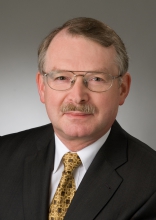06 April, 2016
5G empowering vertical industries
This is a guest blog post written by Werner Mohr, Chair of the 5G PPP.
The original post was published on the European Commission Digital Single Market blog on 01/04/2016
 Why is this white paper important? What's new?
Why is this white paper important? What's new?
5G network infrastructure will be a key asset to make society and economy more efficient and to increase Europe’s global competitiveness as part of the Digital Single Market. The 5G PPP’s (Public Private Partnership) goal is to develop the basic concepts and technical solutions for 5G networks, influence global standardisation and 5G developments. And one of the milestones was the presentation of the white paper on vertical sectors at Mobile World Congress 2016.
The white paper on vertical sectors was published by the 5G Infrastructure Association (IA) together with the European Commission. 5G IA is the private counterpart in the 5G PPP Contractual Arrangement.
It presents innovative digital use cases from the most important vertical sectors in Europe, namely: Factories of The Future, Automotive, Health, Energy and Media & Entertainment, and how their requirements impact the 5G design.
In particular, the document provides for the first time an inclusive analysis of the requirements of vertical industries on data rate, mobility (speed), (low) latency, density, reliability, positioning accuracy and coverage. Such close cooperation with vertical sectors and technical information is key for the global development of 5G and enables competitive advantages for industry in Europe.
Vertical industries as well as the ICT industry will benefit from globally accepted standards and harmonised frequency spectrum. This will enable economy of scale for affordable cost and ensures roaming by interoperability. 5G PPP offers the platform to support this global development by consensus building on basic concepts and technical solutions in 5G PPP research projects and with international counterparts. In addition, it helps to prepare future standards and the development of consolidated views on policy issues in the context of the Digital Single Market.
What are the concrete benefits we should expect after the release of the white paper?
The innovative digital use cases provide direct benefits for European society and citizens: Manufacturing will again become more competitive in Europe in order to maintain and generate jobs. Cooperative and self-driving cars improve safety of citizens and public road and train infrastructure will be used more efficiently. Cost of healthcare can be reduced and access to newest treatments will be available for all citizens. The transformation of the energy system towards decentralised renewable energy generation helps to slow down climate change. 5G networks improve significantly user experience for media and entertainment e.g. by UHDTV video. Open standardised interfaces allow the involvement of new players in respective 5G value chains and enables new business models and new jobs.
What are the next important steps from the 5G PPP/5G IA side?
We will continue and extend the successful cooperation between the 5G PPP and vertical sectors in order to further improve the mutual understanding and to better understand the potential for new applications. The global standardisation process is starting now. In parallel, the preparation of ITU World radio communications Conference 2019 is already ongoing. First 5G trials in Europe are now being planned for 5G PPP Phase 2, where vertical sectors will be involved as early adopters. In Phase 3 this will be extended to bigger trials. Our intention is to position Europe at the forefront of the global 5G development.
***
Werner Mohr, Head of Research Alliances, Nokia and Chair of the 5G PPP
Werner Mohr graduated from the University of Hannover, Germany, with a Master Degree in electrical engineering in 1981 and with a Ph.D. degree in 1987.
Dr. Werner Mohr joined the Siemens AG, Mobile Network Division in Munich, Germany in 1991. He was involved in several EU funded projects and ETSI standardisation groups on UMTS and systems beyond 3G. In December 1996 he became project manager of the European ACTS FRAMES Project until the project finished in August 1999. This project developed the basic concepts of the UMTS radio interface. He has worked for Nokia Siemens Networks since April 2007 and for Nokia Solutions and Networks (now Nokia) since September 2013 in Munich Germany, where he is Head of Research Alliances.
He coordinated the WINNER Project in the European Commission Framework Program 6 and was the chairman of the WWI (Wireless World Initiative) and of the Eureka Celtic project WINNER+. The WINNER projects laid the foundation for the radio interface for IMT-Advanced and provided the starting point for the 3GPP LTE standardisation. In the Framework Program 7 he was coordinator of the FINSENY project as part of the Future Internet Public Private Partnership (FI-PPP) and chairman of the FI-PPP Steering Board from May 2013 to June 2014. In addition, he was vice chair of the eMobility European Technology Platform from 2008 – 2009 and chairperson of the Net!Works (formerly called eMobility) from 2010 – 2011 and 2012 – 2013. He was elected in December 2013 as chairperson of the new communications networks related to ETP NetWorld2020 for the period until June 2016, which was launched in October 2013 based on the former Net!Works and ISI ETPs.
Werner Mohr is now Chair of the Board of the 5G Infrastructure Association as part of 5G PPP of the European Commission. He chaired the "Wireless World Research Forum – WWRF" from its launch in August 2001 up to December 2003. He is member of VDE (Association for Electrical, Electronic & Information Technologies, Germany) and Senior Member of IEEE. In 1990 he received the Award of the ITG (Information Technology Society) in VDE. He was board member of ITG in VDE, Germany for the term 2006 to 2008 and was re-elected for the terms 2009 to 2011 and 2012 to 2014.
Werner Mohr is co-author of a book on "Third Generation Mobile Communication Systems", a book on "Radio Technologies and Concepts for IMT-Advanced" and a book on “Mobile and Wireless Communications for IMT-Advanced and Beyond”.


